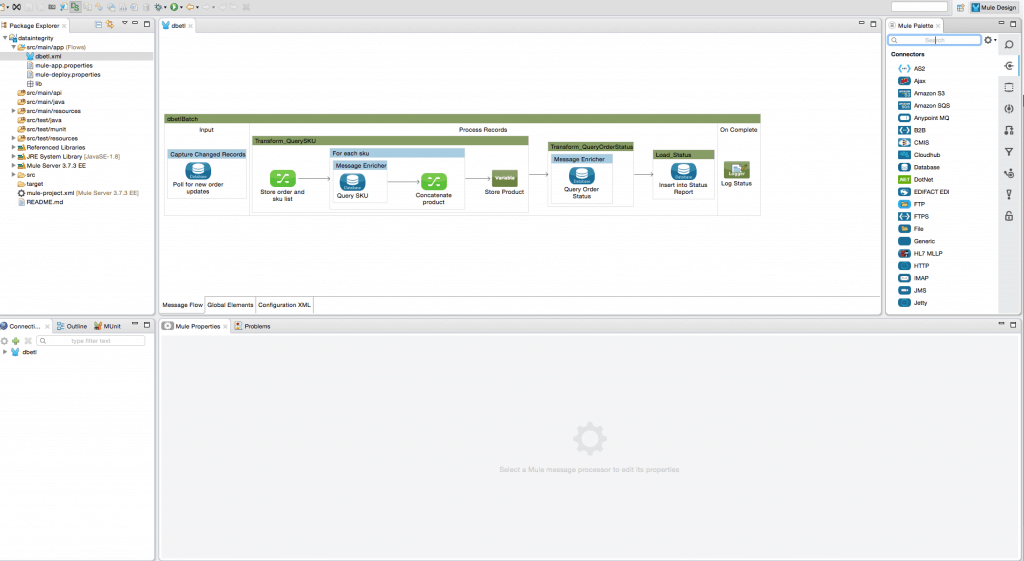Mapr Hive Odbc Driver For Mac
Microsoft® Hive ODBC Driver provides HiveQL access from ODBC based applications to HDInsight Apache Hadoop Hive. This driver is available for both 32 and 64 bit Windows platform. See this page for instructions on how to configure a DSN with this driver and use it to import data from Hive into Excel. System Requirements. The MapR ODBC Driver with SQL Connector for Apache Hive requires a Hadoop cluster with the Hive service installed and running. The MapR ODBC Driver with SQL Connector for Apache Hive is suitable for use with all versions of Hive. The driver supports both 32- and 64-bit client applications.
Support for Advanced Security Features Our Hive JDBC driver supports advanced security mechanisms including Kerberos, Knox, Sentry and Ranger for authentication and authorization across all your distributions. Codeless Bulk Load / Export with BatchMechanism Progress DataDirect JDBC drivers support bulk load through BatchMechanism. This means existing applications, such as Apache Sqoop, can get bulk insert performance without any code changes or external tools such as bcp for SQL Server or SQL.Loader for Oracle.
Learn more from our. Priority. Time Guideline Version(s) High Risk (CVSS 8+ or industry equivalent) 30 days Active (i.e. Latest shipping version) and all Supported versions Medium Risk (CVSS 5-to-8 or industry equivalent) 180 days Active (i.e. Latest shipping version) Low Risk (CVSS 0-to-5 or industry equivalent) Next major release or best effort Active (i.e. Latest shipping version).
Priority is established based on the current version of the Common Vulnerability Scoring System (CVSS), an open industry standard for assessing the severity of computer system security vulnerabilities. For additional information on this scoring system, refer to.

The following instructions assume you already have a SQL Server database running somewhere that your Mac has network access to. Just FYI, Microsoft's instructions for installing the latest drivers are.
Mapr Hive Odbc Driver For Mac Windows 10

Install FreeTDS and unixODBC The connection to SQL Server will be made using the unixODBC driver manager and the FreeTDS driver. Installing them is most easily done using homebrew, the Mac package manager: brew update brew install unixodbc brew install freetds -with-unixodbc Edit the freetds.conf configuration file The freetds.conf file is usually located in directory /usr/local/etc/. However, Homebrew will create this file as a soft link to the real file located here /usr/local/Cellar/freetds//etc/freetds.conf. Check this location with tsql -C. The default file already contains a bunch of stuff, but all you need to do is add your server information to the end, as follows: MYMSSQL host = mssqlhost.xyz.com port = 1433 tds version = 7.3 There are other key/value pairs that can be added but this shouldn't usually be necessary, see for details.

The host parameter should be either the network name (or IP address) of the database server, or 'localhost' if SQL Server is running directly on your Mac (e.g. A TDS version of 7.3 should be OK for SQL Server 2008 and newer, but bear in mind you might need a different value for older versions of SQL Server. For more information on TDS protocol versions see. Do not use TDS versions 8.0 or 9.0 though. Oddly, they are not newer than version 7.4. They are actually obsolete aliases for older TDS versions and their use is discouraged.
Mapr Odbc Driver Download
Test the connection using the tsql utility, e.g. Tsql -S MYMSSQL -U myuser -P mypassword. Aneesoft dvd to flv converter for mac. If this works, you should see the following: locale is 'enUS.UTF-8' locale charset is 'UTF-8' using default charset 'UTF-8' 1 At this point you can run SQL queries, e.g. 'SELECT @@VERSION' but you'll need to enter 'GO' on a separate line to actually execute the query.
Mapr Hive Odbc Driver For Mac Mac
Type exit to get out of the interactive session. Edit the odbcinst.ini and odbc.ini configuration files Run odbcinst -j to get the location of the odbcinst.ini and odbc.ini files (probably in directory /usr/local/Cellar/unixodbc//etc/). Edit odbcinst.ini to include the following: FreeTDS Description=FreeTDS Driver for Linux & MSSQL Driver=/usr/local/lib/libtdsodbc.so Setup=/usr/local/lib/libtdsodbc.so UsageCount=1 Edit odbc.ini to include the following: MYMSSQL Description = Test to SQLServer Driver = FreeTDS Servername = MYMSSQL Note, the 'Driver' is the name of the entry in odbcinst.ini, and the 'Servername' is the name of the entry in freetds.conf (not a network name). There are other key/value pairs that can be included, see for details. Check that all is OK by running isql MYMSSQL myuser mypassword.
You should see the following: +-+ Connected! sql-statement help tablename quit +-+ You can enter SQL queries at this point if you like. Type quit to exit the interactive session.
Connect with pyodbc It should now be possible to connect to your SQL Server database using pyodbc, for example: import pyodbc # the DSN value should be the name of the entry in odbc.ini, not freetds.conf conn = pyodbc.connect('DSN=MYMSSQL;UID=myuser;PWD=mypassword') crsr = conn.cursor rows = crsr.execute('select @@VERSION').fetchall print(rows) crsr.close conn.close.